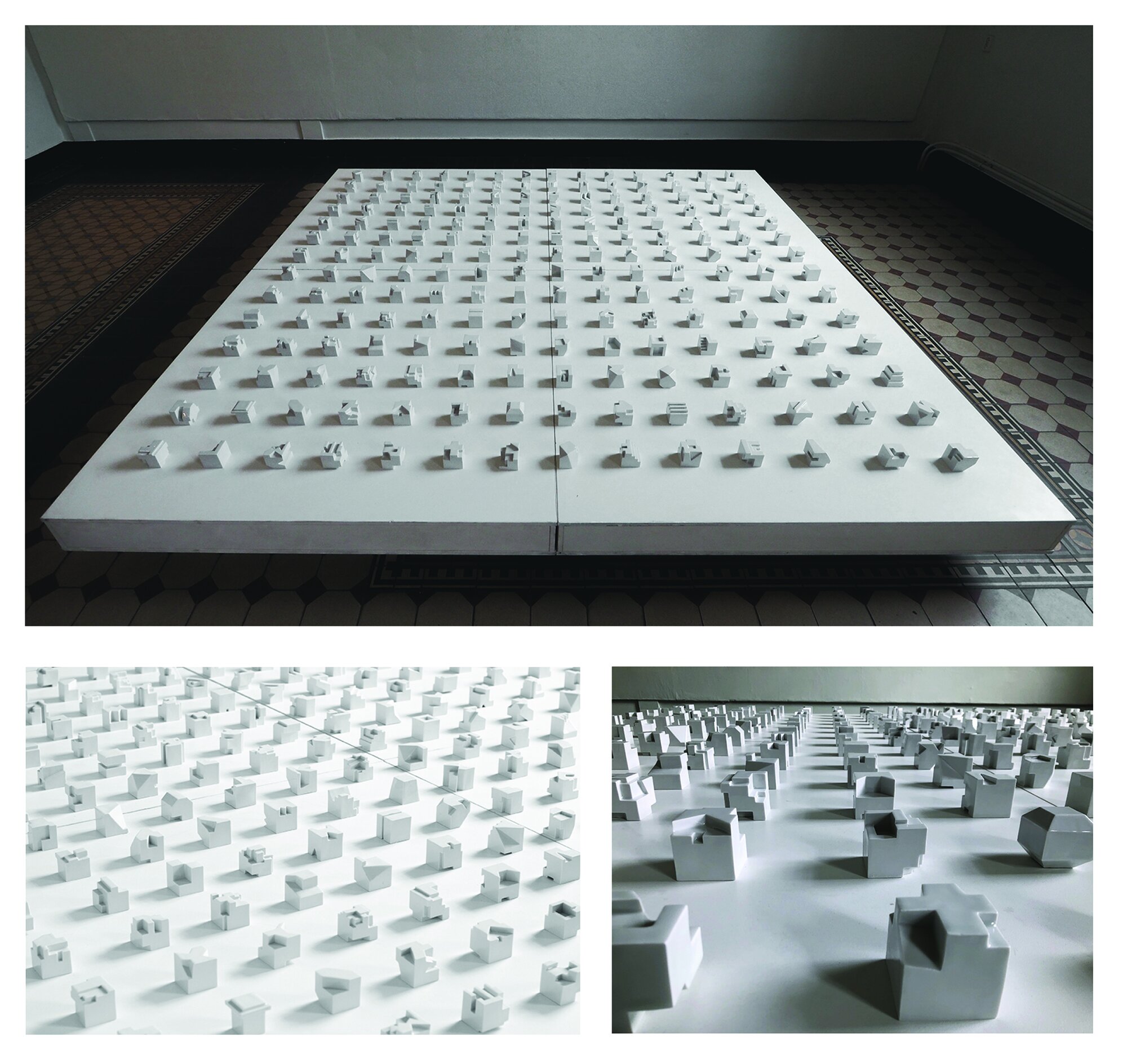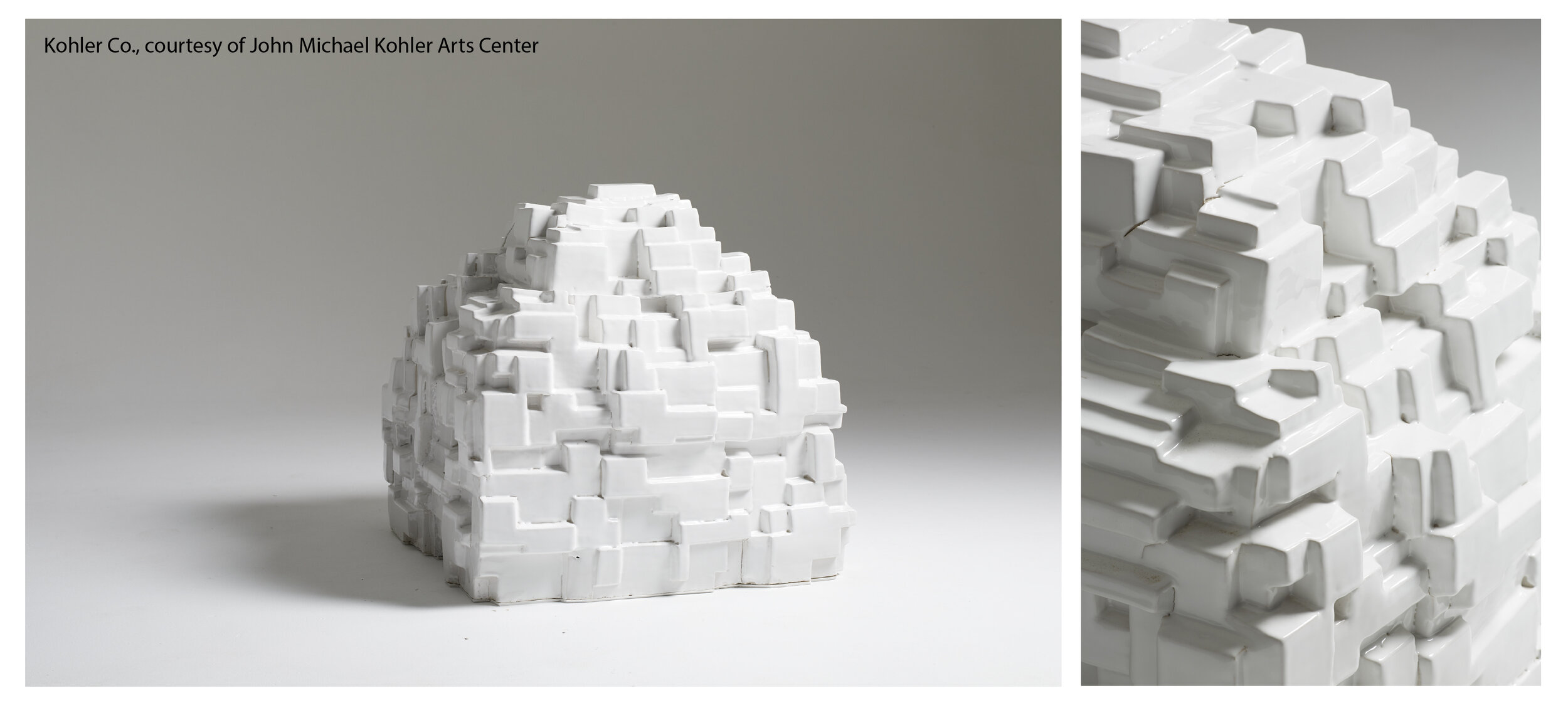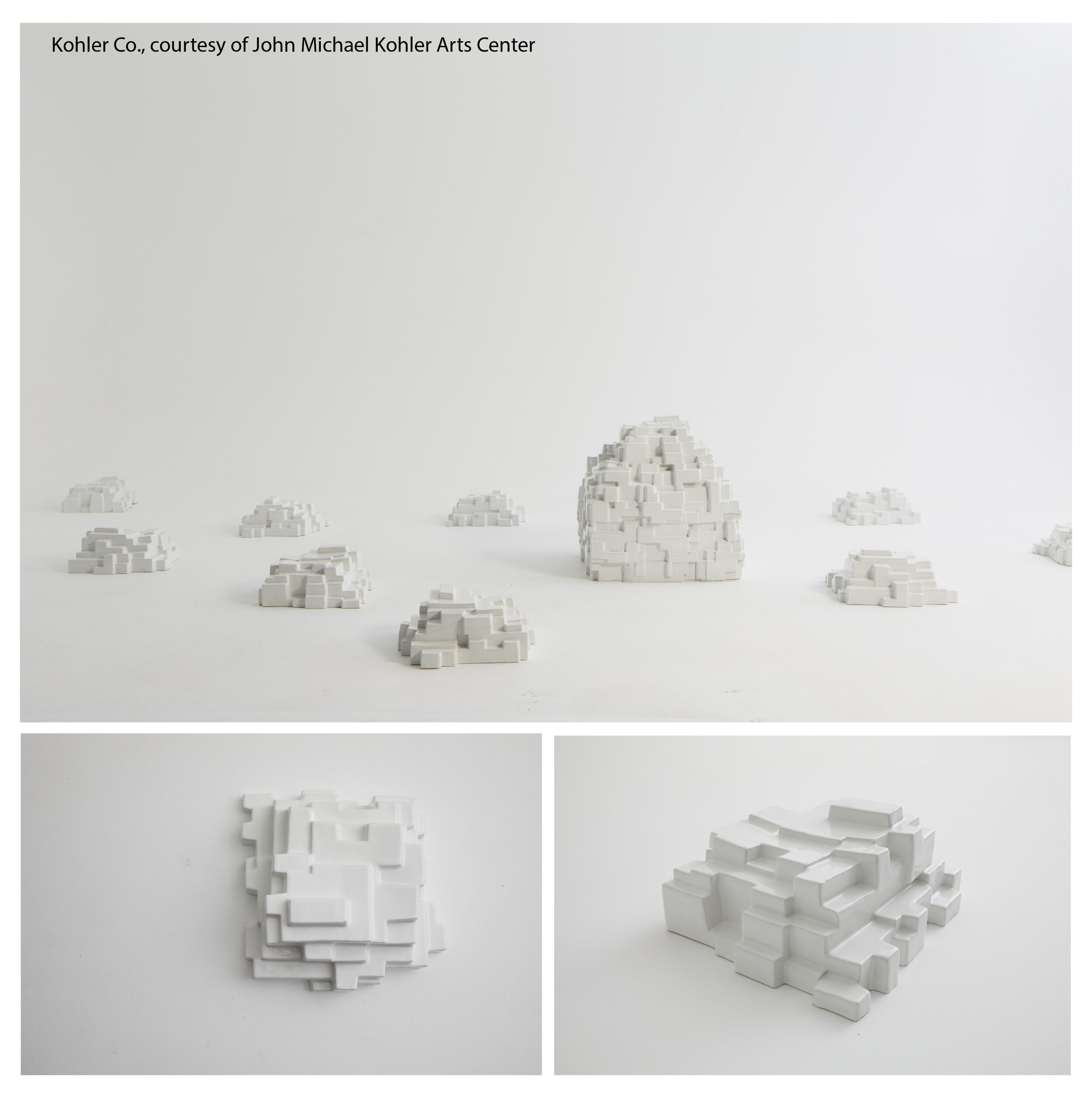Yumiko Ono’s recent theme is utopia/utopian architecture, an ideal world that exists in imagination.
Ono's view on Japan, her native country, as a place suspended between East and West, is reflected in the work she creates. Japan is strongly influenced by the United States and is a very Westernized country economically and politically. However, with a national preference for the formal, ritual, and societal standardizations, Japan and the former Eastern Socialist states exhibit similarities in both societal norms as well as architecture.
Ono has spent her life in Russia, Hungary and Czech where are former Socialist states for almost a decade and currently works in the United States. Ono’s current interest lies in the relation between the United States and the Union of Soviet Socialist Republics (USSR) during the Cold War. Despite the fact that both countries are the archrivals of the Cold War, there are a multitude of cultural intersections between the two. As Japanese, Ono’s personal history and identity is also formed in part by these connections to the East and the West, and she finds it important to conduct this comparative research on both nation states, which are very close to her country, but in their own different ways. By combining visual images and artifacts from completely different cultural backgrounds, Ono wants to contribute to uniting the world from her own perspective.
Ono’s major mediums in recent years are drawing and slip cast porcelain, and she focuses on surface nature in both practices. In her drawing, she collects images of various type of surface and fills the drawn imaginary architecture with the surface materials. She also has various experiences with casting objects as she considers it is a medium which is between 2D and 3D in terms of copying surface. By using this method, Ono attempts to create contents with superficial elements.

















































































